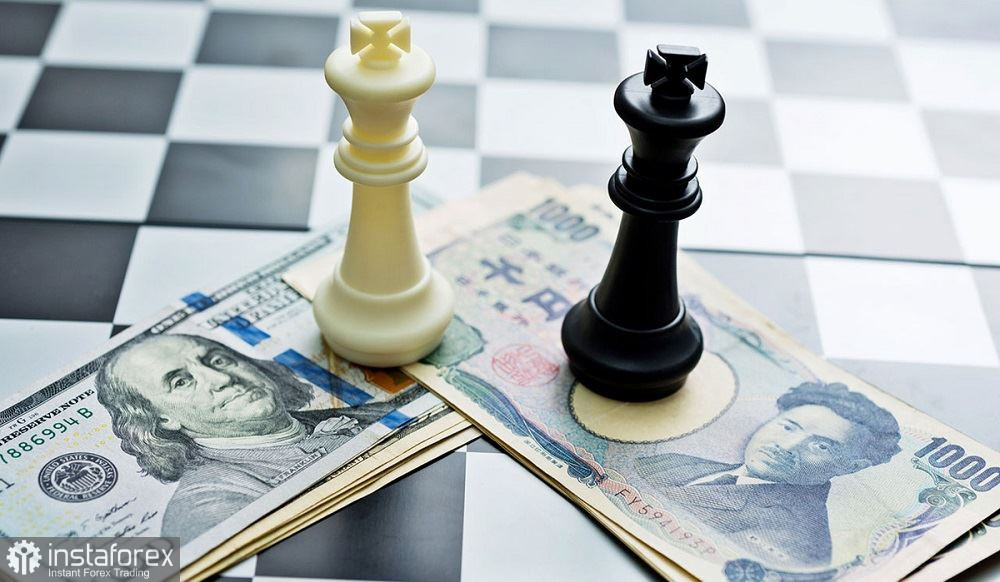Against the backdrop of an unexpected crisis in the US banking system, the dollar is still under the most pressure. Following the failure of the largest American bank, Silicon Valley Bank, another failed - Signature Bank, whose assets were valued at $ 110 billion (SVB – about 200 billion). In light of recent events, the yen is in strong demand as a defensive currency.
They keep making unflattering comparisons to the 2008 financial crisis in the markets and the media, recalling how it all started and how it ultimately ended. But rational people also acknowledge that Lehman Brothers and Bear Stearns, which had been in charge of a trillion dollars' worth of assets for two years, were the true market mastodons that fell 15 years ago. Despite the American authorities' countless "soothing pills," panic moods now rule the markets.
The yen, which today updated the monthly price minimum when paired with the dollar, was one of the benefactors of the current circumstances. The USD/JPY pair is falling not only because risk aversion is rising, but also because there are persistent reports that the Federal Reserve won't hike interest rates in March (whereas a week ago traders seriously discussed the prospects of a 50-point increase). The currency strategists at Goldman Sachs specifically stated today that, in light of the instances involving Silicon Valley Bank and Signature Bank, they no longer anticipate the Fed raising interest rates this month. The "bankfall," in the opinion of GS economists, underscored the issue: while the Fed tightens monetary policy, containing inflation, it also raises the danger of recession and a recession in risky assets.

Let me remind you that Silicon Valley received tens of billions of dollars from its venture clients and placed them in long-term government bonds, the value of which has declined dramatically in the last year as the Federal Reserve raised the discount rate. Although this factor is unlikely to lead the Fed to conclude the current cycle of monetary policy tightening earlier than expected (especially given the backdrop of a slowing in inflation), it may nonetheless help to moderate the Central Bank members' rhetoric. Numerous analysts predict that the Fed may pause at its meeting in March and only increase interest rates by 25 basis points thereafter (in May, June, and possibly in July).
It's also important to remember that the Fed will convene a secret emergency meeting today. Only after this meeting will the issues on the agenda be disclosed. The relevant announcement makes no mention of any additional information.
Several experts claim that the regulator may reduce the interest rate to save the banking industry. Given the seriousness of the issue, this is an unlikely option.
The Federal Reserve, the Deposit Insurance Corporation, and the US Treasury have all been attempting to calm the markets lately. Joe Biden, the head of the White House, joined this chorus today when he declared in a special speech that the US government intended to strengthen regulatory standards to lessen the risk of future failures of major banks. He also reassured the Americans about the security of the nation's banking system.
The US dollar index modestly corrected after Biden's speech, but overall, the position for the dollar is still challenging and highly uncertain.
The Fed and USD/JPY prospects
The Federal Reserve's "planned" meeting was scheduled for next week (March 21–22), which is when data on the development of inflation in the US for February will be made public. In light of the "bankfall," the regulator will now decide on the rate before tomorrow's release of the CPI growth.
The core index will be at 5.5% y/y, while the overall consumer price index is expected to reach 6.0% y/y. In other words, most experts predict that inflation will resume its downward path, adding to the pressure on the US dollar. On the other hand, a significant report will be released on Tuesday, and the Fed will meet in an emergency session today. As a result, the market's potential response to the release of inflation data can only be predicted through the prism of the outcomes of the Central Bank's emergency meeting. The CPI growth report will be crucial in several ways if the Fed continues on its current hawkish path (even given a 25-point pace). Yet, if the Fed softens its rhetoric (let alone its rate decisions), the dollar will face the most pressure - regardless of the color of tomorrow's report.
The yen will move in the same direction as the US dollar index at this time. The USD/JPY pair is currently moving towards the 132.80 support level (the lower line of the Bollinger Bands indicator on the daily chart). If the outcome of the Fed's emergency meeting does not favor the dollar, the pair can surpass this goal, which will allow it to move above the next price resistance, which is 131.50 (the lower limit of the Kumo cloud on D1).





















